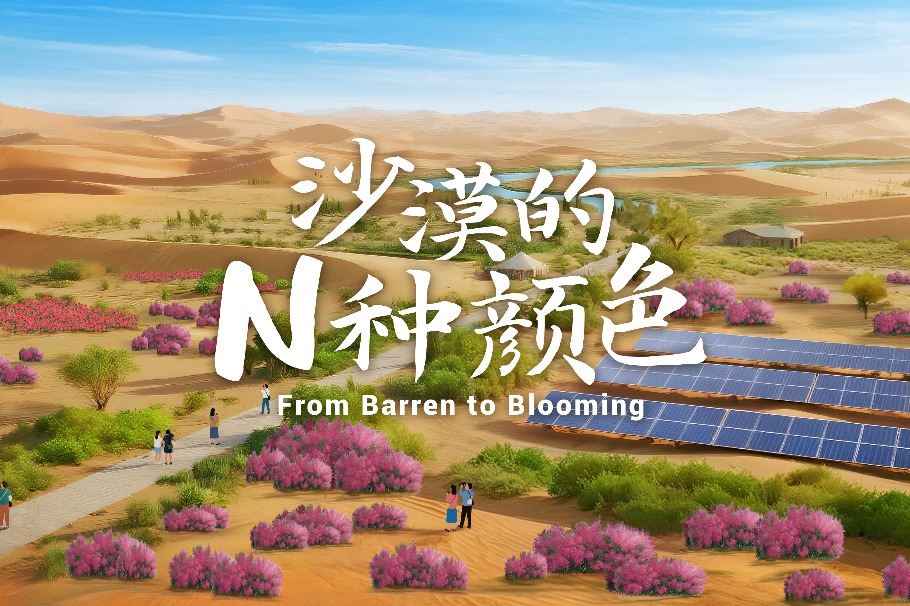Chenlu Ancient Town's ingenious use of ceramics in art and infrastructure


The Chenlu Ancient Town Ecological Museum is located 20 kilometers southeast of Tongchuan city in Shaanxi province and features one of the nation's most treasured art forms. Situated in hilly terrain at an average altitude of 1,300 meters, Chenlu resembles a large basin, with people living along the rim of the basin, creating a layered and densely packed community resembling a beehive.
The abundant natural resources in Chenlu, including the clay and coal needed for ceramic production, allowed the local people to excel in ceramic manufacturing. The entire ceramic-making process, from clay preparation to shaping and decoration to firing, involves 72 distinct steps. For over 1,300 years, the people of Chenlu have been engaged in ceramic production. In 2006, the art of Yaozhou ceramic firing was added to the national intangible cultural heritage list.
Historically, Tongchuan was under the jurisdiction of Yaozhou, and ceramic ware produced in Tongchuan was known as Yaozhou porcelain. The kilns producing Yaozhou porcelain were called Yaozhou Kilns. These kilns were established during the Tang Dynasty (618-907) and were most popular during the Song Dynasty, producing celadon porcelain known for carved and stamped patterns.
Starting from the South Song Dynasty, the production center of Yaozhou Kilns shifted to Chenlu, where it resides today. Its output grew throughout the Ming and Qing Dynasties, and during the Qianlong period (1736-1795) of the Qing Dynasty, the Chenlu Kiln produced over 8 million pieces of porcelain annually.
The Chenlu Ancient Town Ecological Museum currently features 34 ceramic kiln sites from the South Song (1127-1279), Yuan (1271-1368), Ming (1368-1644), and Qing (1644-1911) dynasties, more than 40 ancient kilns, and workshop sites from various historical periods.
People in Chenlu not only excelled in crafting ceramic vessels but also used them to decorate their courtyards to enhance aesthetics and promote their wares to buyers. They decorated their courtyards with discarded ceramic saggars, which weren't glazed and allowed air to flow through them. Similarly, they also built the "guanguan walls" primarily utilizing discarded ceramic saggars made from the leftover materials of ceramic production. The local people call these saggars "guanguan".
Due to rain erosion and snow, sloping roads in the town required constant maintenance. The local people ingeniously used ceramic tiles to pave their roads. These beautiful roads were embedded with place names and auspicious words for safe travel.
























